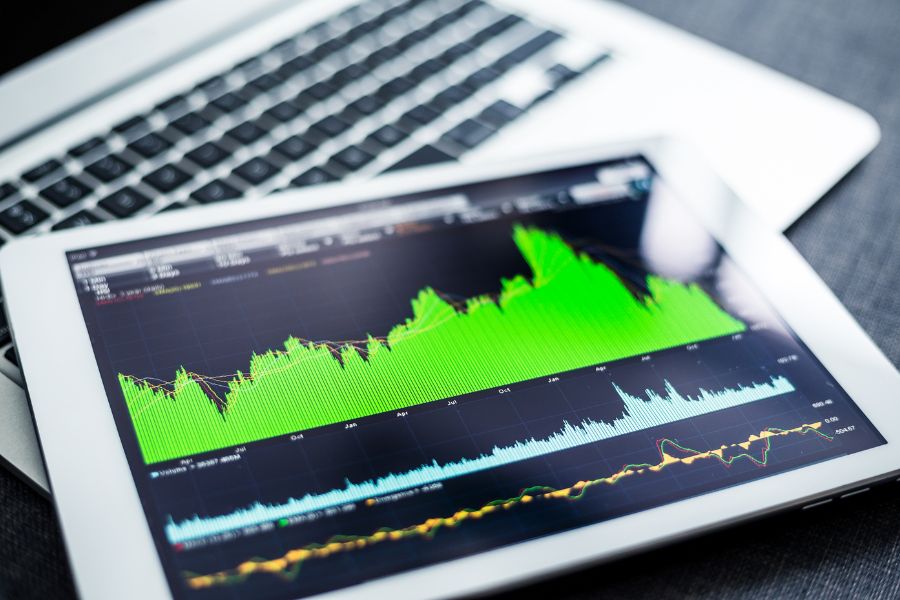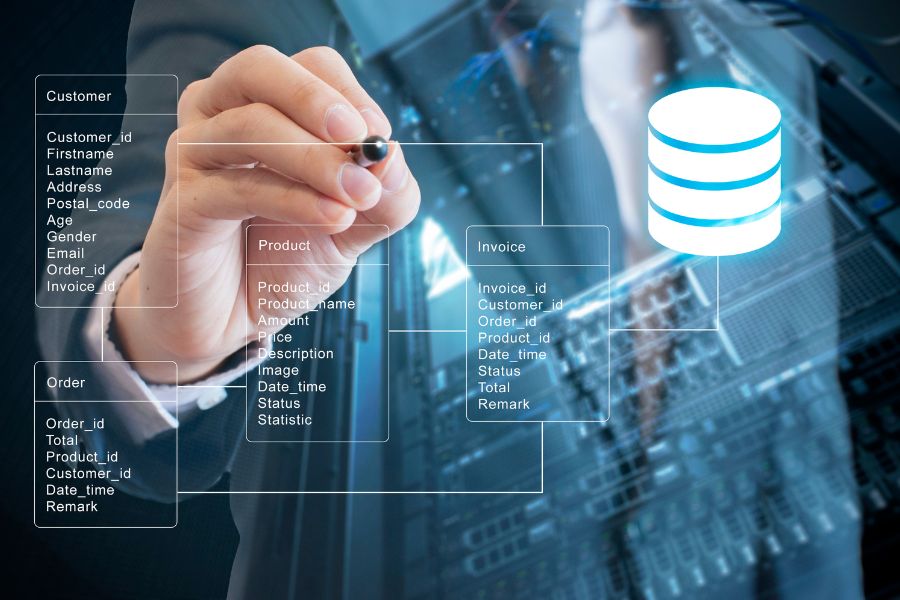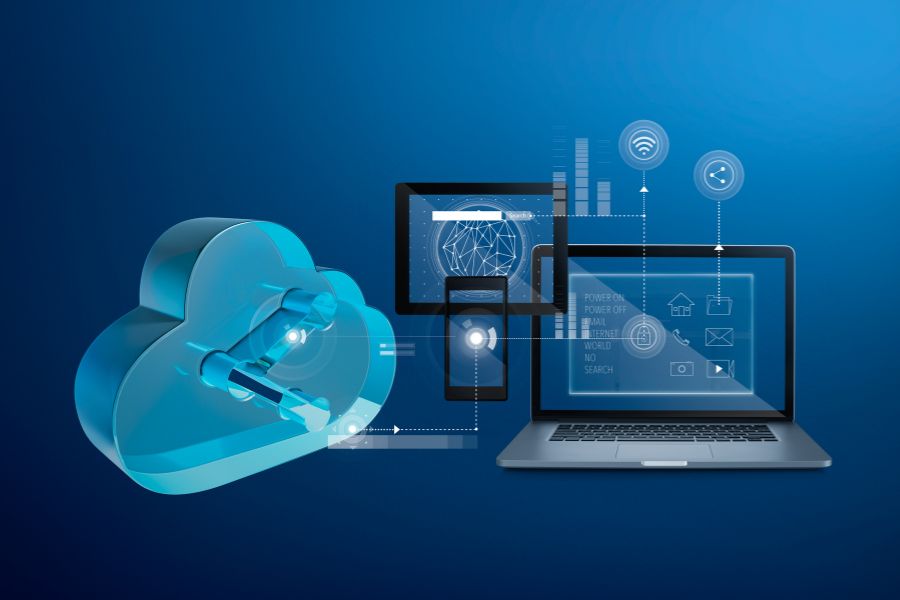The right display tools are needed to find the hidden stories in data. In today’s data-driven world, clearly showing complicated data is essential. But how does someone pick the right tool when there are so many to choose?
We’re glad you found our “Data Visualization Tools FAQ,” a complete guide to answer all your most pressing questions. This guide should help you understand these tools better, no matter how much experience you have as a data analyst.
Find out about the pros, cons, and best practices of data display by reading on. Let’s start a trip to make data accessible to read and interesting to look at. Stay with us until we reveal the keys to good data display.
What Are Data Visualization Tools?

Source: Canva Premium
Modern ways of visualizing data turn vast amounts of complex data into pictures that are easy to understand. In the world we live in now, images are accessible for the brain to understand.
There are pictures, charts, and graphs in this set of tools that help you understand numbers better. People in business and research can look at their data and find patterns, connections, and trends they couldn’t see before. This helps us come to meaningful conclusions.
Why Are Data Visualization Tools Important?
Data is so important right now that understanding it is essential. With data display tools, you can connect raw data to good ideas. They show facts in a way that is easy to understand so that people and groups can make quick decisions.
These technologies make huge numbers more straightforward to understand. It encourages choices based on data. They make information available so everyone can use data well, even if they don’t know how to use computers.
How Do Data Visualization Tools Work?

Source: Canva Premium
Data visualization tools use a lot of code and ways that are hard to understand. The first place these tools get their data is from databases and streams. It also gets from files things that are happening right now. When you process the data, you can find patterns and trends.
Then, vital graphics programs are used to make nice-looking line graphs, pie charts, and heat maps from the data. Customization means having tools that let people change pictures. Real-time features and screens you can interact with make it easier to understand complicated information.
Which Are the Most Popular Data Visualization Tools?
Tableau
This is one of the best tools for visualizing data. It has an easy-to-use interface makes it simple to make complex and live visualizations. Its drag-and-drop feature makes it easy for first-timers and pros to create dashboards, reports, and other things. It can be used in a lot of different businesses because it can connect to a lot of various data sources.
Power BI
It is a business analytics tool created by Microsoft that lets you see data and get information about your business. It provides interactive visualizations and self-service options and works with many Microsoft goods. Users can get data from many different systems, including Excel, and show it in a visually appealing way.
QlikView
QlikView is a Business Intelligence (BI) tool famous for its associative model. It lets you see data from many sources and encourages more in-depth analysis. It stands out because it enables you to make reports without help. With QlikView, users can quickly find patterns and trends that aren’t obvious at first glance. This makes it easy to find data.
D3.js
It is a JavaScript tool for Data-Driven Documents that lets users use HTML, SVG, and CSS to bring data to life. People who know how to code like it because it gives them much freedom when making custom images. It is trendy among developers because it is open source and lets you connect any data to a Document Object Model (DOM).
TIBCO Spotfire
TIBCO’s Spotfire provides business data and analytics tools for various industries. It has advanced data analytics, interactive dashboards, and the power to handle complicated use cases. With its powerful AI, Spotfire can suggest images and give you insights based on your provided data.
How Do I Choose the Right Tool for My Needs?

Source: Canva Premium
In the digital age, choosing the right tool for the job is essential. Making an educated choice is the only way to maximize your resources and return on investment (ROI). Make a list of your most critical needs, like real-time info, ease of use, or the ability to make changes.
There are free and paid tools, so consider how much money you have. Always ensure that it works well with the tools you already have to ensure that info flows. Feedback from users and expert suggestions can show how reliable a device is.
Remember that the right tool should meet your needs now and grow with your business. When you make choices based on data, the projects work best.
Can I Use Data Visualization Tools Without Any Coding Skills?

Source: Canva Premium
Over time, it has become easy for new and experienced users to see data. Many tools are made for people who aren’t tech-savvy, so you don’t need to know how to code to use them. People can do it with the help of drag-and-drop tools, dashboards, and simple platforms.
These people who aren’t coders have to look at complex data. Both Tableau and Google Data Studio are ahead of the curve because they help and train new users a lot. More advanced choices are harder to find, but the basic ones are easy to click on.
Don’t put off showing facts because you don’t know how to code. Everyone can use the tools. Using these creative ideas, you won’t have to write any code. Let your data tell the story.
What Kinds of Data Can I Visualize?

Source: Canva Premium
In today’s digital era, the use of graphical visualization tools, like histograms and spreadsheets, has become increasingly essential. These tools can not only depict numerical data, such as sales figures, website metrics, or poll results but can also effectively represent qualitative data like customer feedback and text content. For instance, while a spreadsheet might be ideal for organizing raw data, a histogram provides a more visual representation of data distribution.
Various types of data, such as grouped data and time series data, can be seamlessly visualized using these tools. Heat maps, for instance, excellently illustrate statistical data about specific locations, while tree plots are adept at displaying hierarchical relationships among groups of items.
The advent of “Big Data” has transformed the way we perceive vast amounts of information. This shift is akin to the evolution in how people interact with social media or shop online. By incorporating graphical elements into data representation, we can make complex datasets more comprehensible, similar to offering a free trial that allows users to experience a product firsthand before fully committing.
How Can I Ensure My Data Visualizations Are Effective?
Crafting effective visual representations requires a blend of clarity, utility, and engagement. Begin by understanding your audience. What are their needs? How best can you convey the information to them? Often, simplicity trumps complexity. This means opting for different chart types, like area charts, that present data in an easily digestible manner.
Consistency is key; stick to color schemes and legends that remain uniform across your visualizations. This aids in reducing confusion. Integrating interactive elements can captivate users, fostering deeper exploration and comprehension of the data. Above all, prioritize accuracy, ensuring that the visuals faithfully represent the underlying data.
It’s beneficial to solicit feedback routinely, adjusting your designs to enhance clarity and understanding. By aligning the aesthetics with the purpose, your data visualizations will not only be appealing but will effectively convey the intended message.
Can Data Visualization Tools Handle Real-Time Data?

Source: Canva Premium
Yes, of course! Real-time data display options are becoming more popular in today’s fast-paced digital world. Power BI, Tableau, and Google Statistics Studio all show real-time statistics.
With this tool, businesses and groups can quickly react to new trends. It can have events they didn’t expect and other things. Real-time info helps planners be more innovative and more flexible.
However, data sources and interfaces must be set up correctly for data to move in real time. Real-time data display gets better with each new technology, which makes it more useful in places where data is important
Final Thoughts
Data display tools are becoming increasingly critical for making decisions based on data. They take complicated info and turn it into pictures. Helpful ideas are linked to detailed information in this way.
These tools help beginners learn how to use the most basic features and pros make more complex changes. In today’s digital world, where things change quickly, real-time data handling makes them even more critical.
This info sheet should answer all your essential data visualization tool questions. A lot more tech news, mainly about AI: learn about other AI tools by reading our list of 17 best visual collaboration posts.
Let’s look into the future together! Visit our blog to learn more about data visualization tools.
More FAQs About Data Visualization Tools
How Do I Learn to Use a Specific Data Visualization Tool?
It’s crucial to identify the chart type best suited for the representation of data you’re working with. Each type of chart serves a unique purpose; for instance, a bar chart might be ideal for comparing different categories, while a line chart can effectively display trends over time.
Engaging with resources or tutorials tailored to the specific visualization tool you’re interested in can be beneficial. Moreover, seeking guidance or mentorship from a seasoned data scientist can provide invaluable insights. They can guide you on best practices and nuances in visualizing complex data, ensuring your charts are both accurate and insightful.
What can data visualization do?
Data visualization is the graphical representation of information, which aids in visualizing large sets of data to see patterns, trends, and insights. It’s particularly useful in the world of big data, where interpreting millions of data points can be challenging, and that’s where data visualization techniques come into play.
Why is data visualization important in data analysis?
Data visualization helps translate complex data in a visual format, making it easier for individuals to comprehend and make data-driven decisions. With the right visualization, even thousands of data points can be interpreted quickly and effectively.
What are some common types of data visualizations?
There are numerous visualization types, including bar graphs, line charts, pie charts, and heat maps. The choice of chart often depends on the categories of data you’re working with and the kind of insights you’re aiming to derive.
With so many data visualization tools available, how do I choose the right one?
When choosing a data visualization tool, consider factors like the volume of data you’ll be working with (large data sets vs. smaller ones), the visualization techniques offered, compatibility with different types of data, and your specific visualization needs. Reviews, expert recommendations, and free data visualization tool trials can also assist in making an informed decision.
Are there free data visualization tools available?
Yes, many data visualization tools provide free versions with limited features, ideal for beginners or those with limited data visualization needs. Some popular options include certain tiers of Microsoft Power BI and other visualization software.
How do data visualization tools handle dynamic data, like social media posts or public data?
Many data visualization tools come with features that can handle dynamic data, offering responsive charts that update in real-time or at regular intervals. Tools also often allow integrations with various data sources to pull in real-time data, such as social media metrics or public data streams.
As a beginner, where can I learn more about data visualizations and their creation?
The field of data visualization is vast, with many resources available online. Workshops, online courses, and tutorials can guide you in choosing the right data visualization software, understanding different data sets, and creating data visualizations effectively.
How does data visualization support large businesses with vast amounts of data?
In the world of big data, businesses often grapple with millions to billions of data points. Data visualization tools provide mechanisms for efficiently displaying data points, making it feasible for companies to derive actionable insights from large data series, even when dealing with dynamic or continuously updating data.






